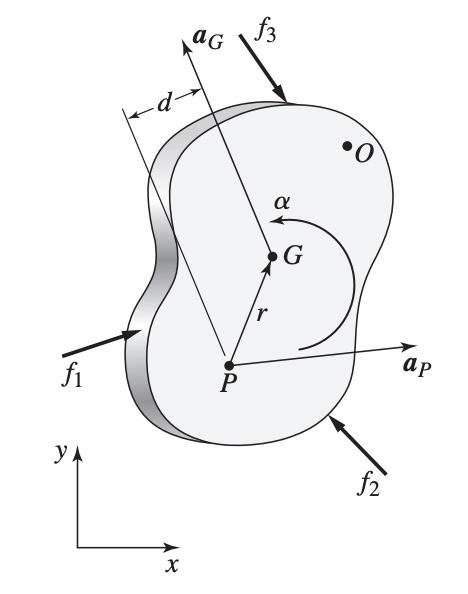General planar motion refers to translation restricted to a plane, and rotation restricted to the axis perpendicular to this plane. A rigid body moves in a plane passing through its center of mass and symmetrical with respect to the plane.
Motion is then described as translation and rotation about an axis perpendicular the the plane.

- is the center of mass
- is a fixed point (center of rotation)
Force and Moment Equations
We can use two force equations to describe translational motion:
where and are the net forces acting on the mass in the and directions, respectively. The mass center is located at point . Finally, and are the accelerations of the mass center in the and directions relative to the fixed - plane.
When the object is constrained to rotate around an axis , we have
where is the mass moment of inertia of the body about point , and is the sum of the moments applied to the body about the point .
The equation below applies whether or not the axis of motion is constrained:
where is the net moment acting on the body about an axis that passes through the mass center and is perpendicular to the plane of the body. and are the mass moment of inertia and angular acceleration of the body about this axis.
For an accelerating point , not fixed to the body, we have:
where is the distance between and a parallel line through . (See diagram above!)